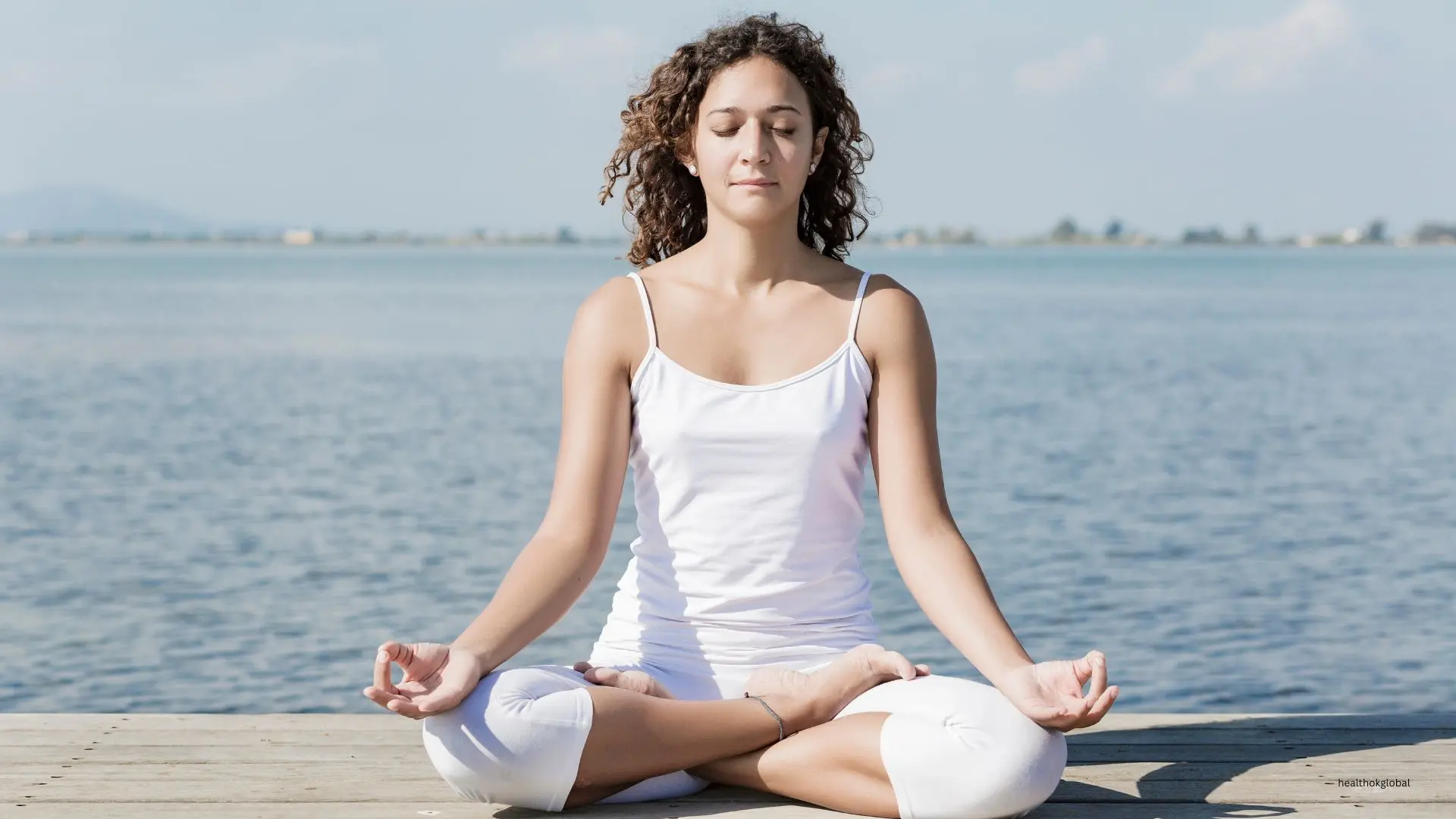Padmasana, also known as the Lotus Pose, is a fundamental yoga posture that promotes physical stability and mental calmness.

Blog
Padmasana Yoga: Benefits, Steps, and Tips for Mastery
Padmasana, also known as the Lotus Pose, is a fundamental yoga posture that promotes physical stability and mental calmness. This cross-legged sitting position is often used for meditation and pranayama (breathing exercises), providing a stable base for the practitioner. Padmasana helps to open the hips, strengthen the back, and enhance overall flexibility. This blog explores the benefits, step-by-step guide, and tips for mastering Padmasana.
Padmasana offers a range of physical and mental benefits. Some of the key benefits include:
The Lotus Pose stretches the hips, knees, and ankles, enhancing overall flexibility.
This pose strengthens the back muscles, helping to maintain a straight spine during meditation.
Padmasana is known for its calming effects, reducing stress and promoting mental clarity.
By providing a stable base, Padmasana helps improve focus and concentration during meditation.
The pose stimulates the digestive organs, promoting better digestion and metabolism.
Padmasana helps balance the energy levels in the body, promoting a sense of harmony and well-being.
Regular practice of Padmasana can improve joint health by increasing flexibility and reducing stiffness.
The pose encourages a straight and aligned posture, beneficial for both sitting and standing positions.
To perform Padmasana, follow these steps carefully:
Sit on the floor with your legs stretched out in front of you and your spine straight.
Bend your right knee and place your right foot on your left thigh, as close to the hip as possible.
Bend your left knee and place your left foot on your right thigh, as close to the hip as possible.
Adjust your posture so that your spine is straight, shoulders are relaxed, and hands are resting on your knees in Chin Mudra (thumb and index finger touching).
Hold the pose for several breaths, focusing on your breath and maintaining a straight spine.
Gently release the pose by stretching your legs out in front of you and relaxing your body.
Mastering Padmasana requires practice and patience. Here are some tips to help you improve:
Always warm up with gentle stretches before attempting Padmasana to prevent injury.
If you find it challenging to sit in Padmasana, use a cushion or yoga block for support.
Maintain steady and deep breaths throughout the pose to stay relaxed and focused.
Engage your core muscles to support your spine and maintain a straight posture.
Incorporate Padmasana into your regular yoga practice to build flexibility and stability over time.
Never push yourself too hard. Listen to your body and modify the pose as needed to avoid injury.
Avoid these common mistakes to ensure safe and effective practice:
Don't force your legs into the pose. Ease into it gradually and respect your limits.
Keep your shoulders relaxed and avoid hunching them up towards your ears.
Always warm up properly before attempting Padmasana to prevent muscle strain.
Keep your breath steady and avoid holding your breath during the pose.
To make Padmasana accessible to all levels, consider these modifications and variations:
Perform the pose with one leg at a time for a gentler stretch.
Use a yoga block or cushion under your hips for added support.
For a deeper stretch, bring your hands into a reverse prayer position behind your back.
While Padmasana is beneficial, it may not be suitable for everyone. Take the following precautions:
If you have a history of knee injuries, consult with a healthcare professional before attempting this pose.
Those with hip injuries should be cautious and modify the pose as needed.
Pregnant women should avoid Padmasana due to the pressure it places on the abdomen.
Always listen to your body and avoid pushing yourself beyond your comfort level.
Padmasana, or the Lotus Pose, is a fundamental yoga posture that offers numerous benefits for both the body and mind. By incorporating this pose into your regular yoga practice, you can improve flexibility, strengthen your back, and enhance overall well-being. Remember to follow the steps carefully, listen to your body, and practice regularly to master Padmasana and enjoy its full range of benefits.
Padmasana offers a range of physical and mental benefits. Some of the key benefits include:
To perform Padmasana, follow these steps carefully:
Padmasana, or the Lotus Pose, is a fundamental yoga posture that offers numerous benefits for both the body and mind. By incorporating this pose into your regular yoga practice, you can improve flexibility, strengthen your back, and enhance overall well-being. Remember to follow the steps carefully, listen to your body, and practice regularly to master Padmasana and enjoy its full range of benefits.
Need Personalized Health Guidance?
Get expert advice tailored to your specific health needs from our qualified healthcare professionals.





